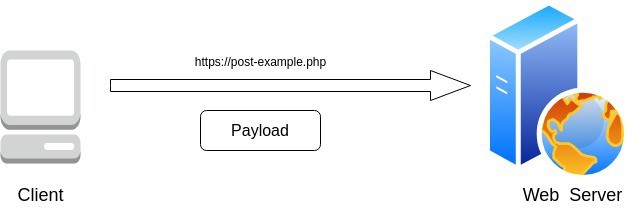1. 概述
在客户端与服务器进行通信时,背后依赖的是超文本传输协议(HTTP)。HTTP 是客户端与服务器之间的一种请求-响应协议。
在众多 HTTP 请求方法中,GET 和 POST 是最常用的两种。它们分别用于从服务器获取数据和向服务器发送数据,是实现客户端与服务器通信的核心方法。
本文将深入对比 GET 与 POST 的主要区别,帮助你在实际开发中做出更合适的选择。
2. GET 方法
GET 方法用于从指定资源中获取数据。它适用于获取所有对客户端可见的资源,例如 HTML 页面、图片、视频等。

客户端发送 GET 请求时,需要指定要访问的资源 URL。该请求被发送到服务器后,服务器处理请求并将数据返回给客户端。
GET 请求的参数通常以查询字符串(query string)的形式附加在 URL 后面,因此对所有人可见。
✅ 优点:
- 可以缓存
- 可以加入书签
- 易于调试和重放
❌ 缺点:
- 数据暴露在 URL 中,不安全
- 传输数据长度有限制
3. POST 方法
POST 方法用于向服务器提交数据以创建或更新资源。常用于提交表单、上传文件等操作。

发送 POST 请求时,客户端需要指定目标资源的 URL 和要发送的数据。这些数据被封装在 HTTP 请求体(body)中,并发送给服务器。
POST 方法的参数不会显示在 URL 中,而是放在请求体中,因此更安全。
✅ 优点:
- 数据不会暴露在 URL 中
- 支持更多类型的数据(如二进制)
- 不受 URL 长度限制
❌ 缺点:
- 不能缓存
- 不能加入书签
- 不易调试(需查看请求体)
4. GET 与 POST 的主要区别
4.1. 数据可见性
| 方法 | 数据可见性 |
|---|---|
| GET | 数据暴露在 URL 中 |
| POST | 数据在请求体中,不可见 |
⚠️ 踩坑提醒:GET 请求中包含敏感信息(如密码)时,容易被日志或浏览器历史记录记录,存在安全风险。
4.2. 安全性
| 方法 | 安全性 |
|---|---|
| GET | 不安全,参数暴露 |
| POST | 更安全,参数在 body 中 |
⚠️ 踩坑提醒:即使是 POST,也不是绝对安全,仍需加密传输(如 HTTPS)。
4.3. 缓存与书签支持
| 方法 | 是否可缓存 | 是否可加入书签 |
|---|---|---|
| GET | ✅ 是 | ✅ 是 |
| POST | ❌ 否 | ❌ 否 |

✅ 优点:GET 更适合用于获取静态或缓存内容。
4.4. 对服务器状态的影响
| 方法 | 是否修改服务器状态 |
|---|---|
| GET | ❌ 否(只读) |
| POST | ✅ 是(创建/更新资源) |
💡 提示:GET 应该是幂等的,不会引起副作用;而 POST 是非幂等的,可能改变服务器状态。
4.5. 传输数据量限制
| 方法 | 数据长度限制 |
|---|---|
| GET | ✅ 有(受 URL 长度限制) |
| POST | ❌ 无 |
GET 请求的参数通过 URL 传递,而 URL 长度是有限制的(通常浏览器限制在 2KB 左右)。
4.6. 数据类型支持
| 方法 | 支持的数据类型 |
|---|---|
| GET | ✅ 字符串(URL 编码) |
| POST | ✅ 字符串、数字、二进制等 |
POST 支持上传文件、JSON、XML 等多种格式,适合复杂数据交互。
5. 总结
| 特性 | GET | POST |
|---|---|---|
| 目的 | 获取数据 | 创建/更新资源 |
| 安全性 | 低 | 较高 |
| 数据可见性 | 在 URL 中可见 | 在 body 中不可见 |
| 缓存支持 | ✅ | ❌ |
| 书签支持 | ✅ | ❌ |
| 数据长度限制 | ✅ | ❌ |
| 数据类型 | 字符串 | 多种类型 |
在实际开发中:
- ✅ 使用 GET 获取资源、查询数据(如搜索、列表)
- ✅ 使用 POST 提交数据、创建或更新资源(如表单、文件上传)
💡 选择合适的方法不仅能提高接口的可维护性,也能增强系统的安全性与性能。